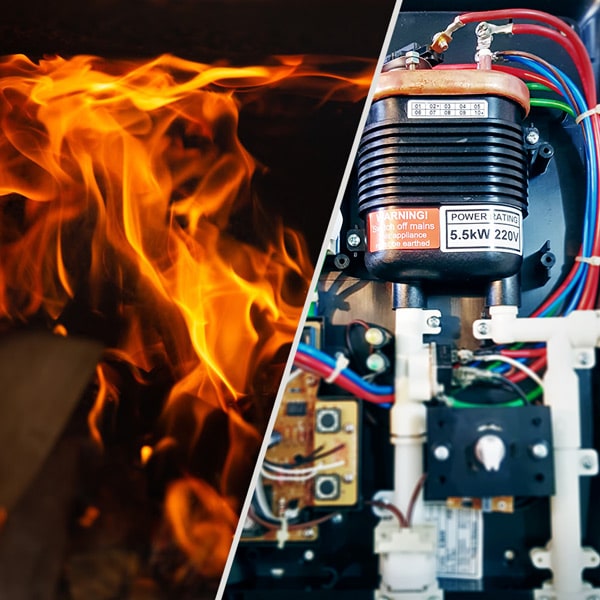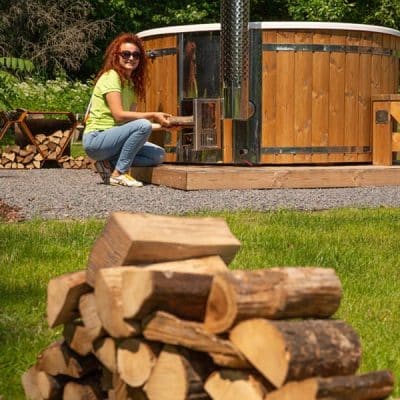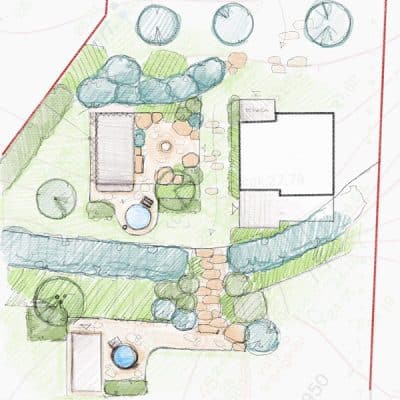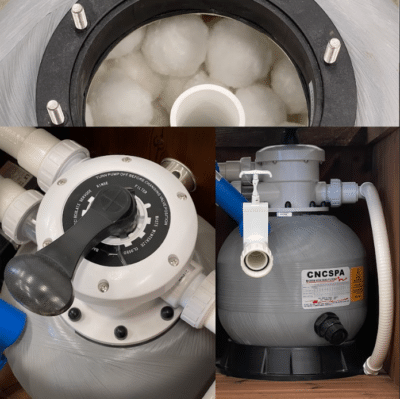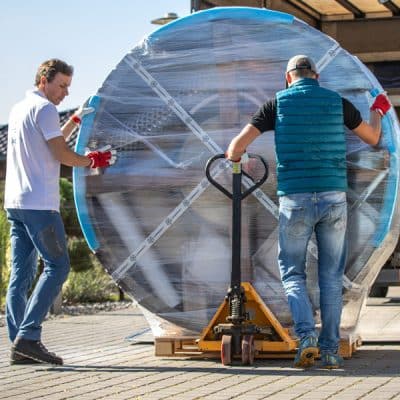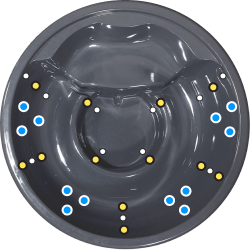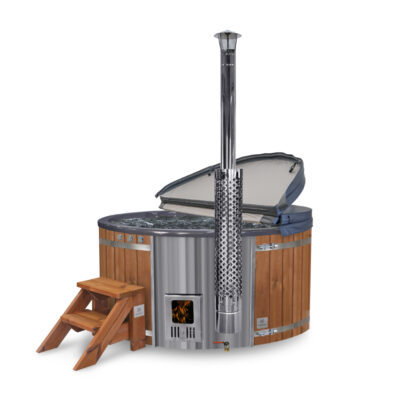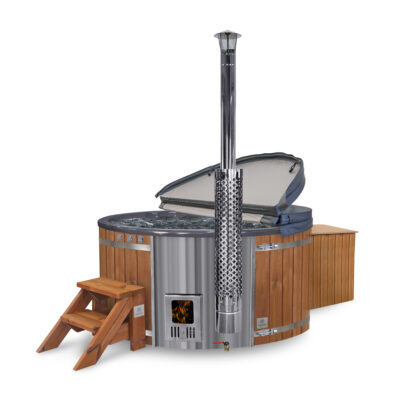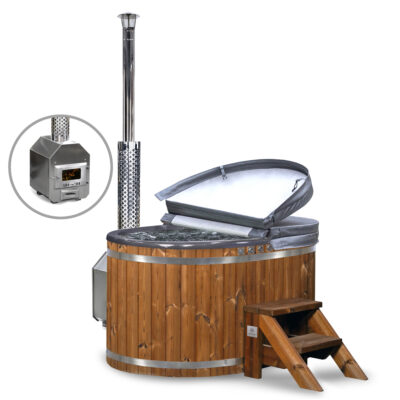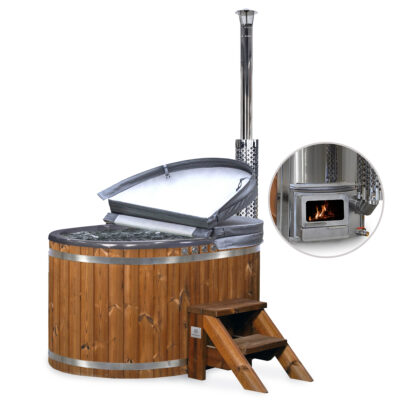While an electric heater usually means a convenient operation, a wood-fired heater offers many advantages.
Wood-fired hot tub means better operating costs, considerably quicker heating, and it’s a more sustainable option today that can be placed in your back garden, next to a woodland cabin holiday let, or just anywhere else you want. Let’s review the aspects that play important roles when deciding between a wood-fired and an electric heater for a spa to use at home. We’ll weigh in the pros & cons of both options.
Here’s how we’ve structured the areas for your consideration:
1. Heating time – how long will it take to heat the water?
When it comes to water heating time, an average electric heater comes nowhere close to a wood-fired one, doing the job at least 6 times longer!
No less than four factors weigh in when it comes to water heating time, regardless of whether a wood-fired or electric heater is used. However, after keeping records for some time, we may talk about the average values, allowing you to get a general idea.

What determines the water heating time?
- The size of a hot tub
- Season – outside weather temperature
- Water temperature before heating
- Your experience
The average size hot tub needs 350 gallons (1,600 litres) of water.
A Gardenvity wood-fired hot tub with an integrated heater will take 1-2 hours to heat the water in summer and 3-4 hours in the cold season.
An electric heater will need 12-24 hours to heat the same amount of water, depending on the determining factors.
TIP: Covering the hot tub is crucial since uncovered water will lose heat through its all surface. Using an insulated cover may reduce the heating time by as much as a full hour!
With a wood-fired hot tub, your experience will factor in much more than with an electric heater (when you have close to no impact on the water heating time). Here are the tips for heating the water in the most effective way.
2. Cost per single-use – how much will you pay to heat the water once?
A hot tub with an electric heater will, beyond a doubt, have a strong word on your electricity bills. The firewood needed for a wood-fired heater, on the other hand, may come from different sources and usually will cost substantially less than the electric power.
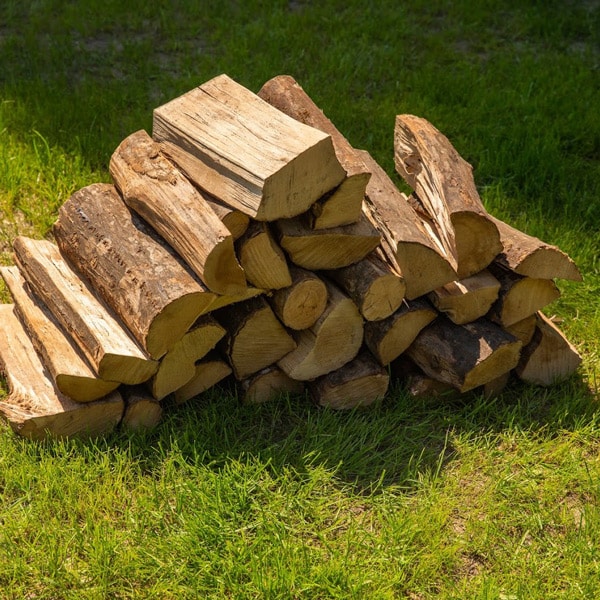
Heating the water requires 12-25kg of dry firewood. This may cost nothing if you bring any logs home after cleaning a park or a forest. Buying prepared kiln-dried hardwood logs of this amount may cost around £5-10 in the UK.
TIP: Use a mixture of softwood (to build up the fire) and hardwood (to maintain the heat), also different sizes of logs (smaller ones at the beginning and larger logs to retain the heat).
TIP: Kiln-dried, barkless firewood will produce less smoke and heat the water in the shortest time.
A standard electric heater will consume 6kWh of electricity every operating hour. Given the estimated electricity price in the UK of 34 pence per kWh*, a single heating will cost between £24-48.
*Based on the government Energy Price Guarantee rates from October, 2022 through to June, 2023.
3. Sustainability – which type of heating is more eco-friendly?
The controlled amount of wood you’ll use in a wood-fired heater is an entirely renewable energy source.

In the UK, around 30% of the consumed electric power is generated from renewable supplies. The number keeps increasing, but it still leaves us with roughly 70% of the energy that puts a strain on the Earth.
4. Convenience – a fire burning ritual vs a push of a button
Operating an electric heater offers the simplicity of a press of a button which might be a factor for some of us.
A wood-fired heater will make you do some prep-work, and you’ll have to take care of the ashes now and then.
It only takes plugging in and pushing a button with an electric heater.
You will incur costs for installing a suitable power outlet close to your hot tub.
You will be limited when choosing the spot for your hot tub.
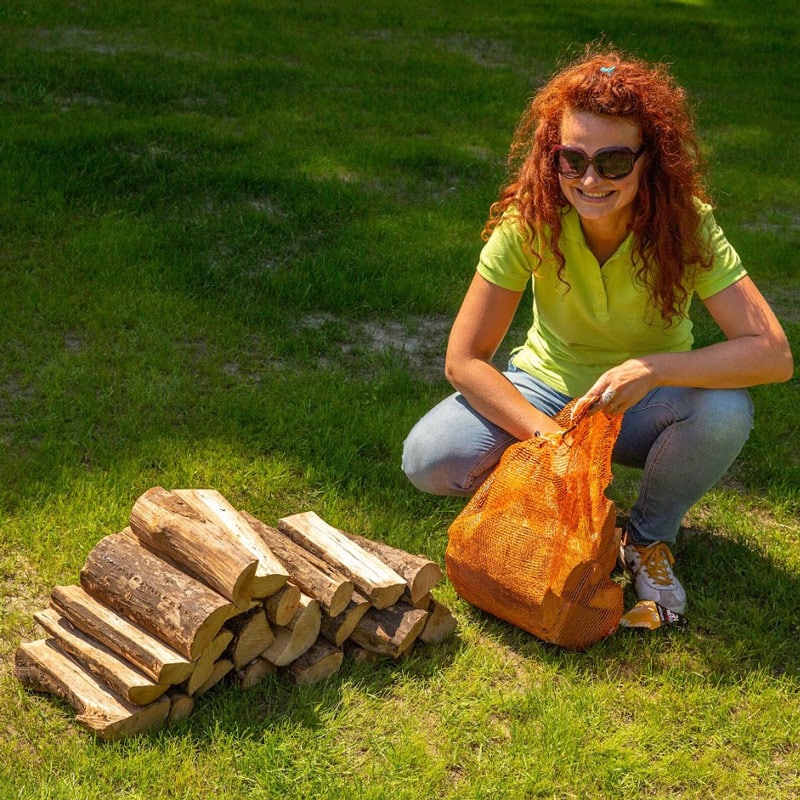
You can install your hot tub anywhere you like. A classic model does not require any power, and the powered option needs only a basic 13Amp cable to supply energy over a reasonable distance.
You get to live out the sensations when preparing firewood and burning the fire – all by yourself or with the company.
Preparing the firewood will take time, as well as emptying the ash drawer occasionally.
You’ll have to get relevant information from the local authority regarding smoke-free areas in the UK to be able to use a wood-fired heater.
5. The verdict – summing all up
The comparison in four key areas showed us more advantages of a wood-fired heater.

Forgive the bias, but the wood-fired heater is our bottom-line recommendation for wooden hot tubs.
Happy hot tubing!
